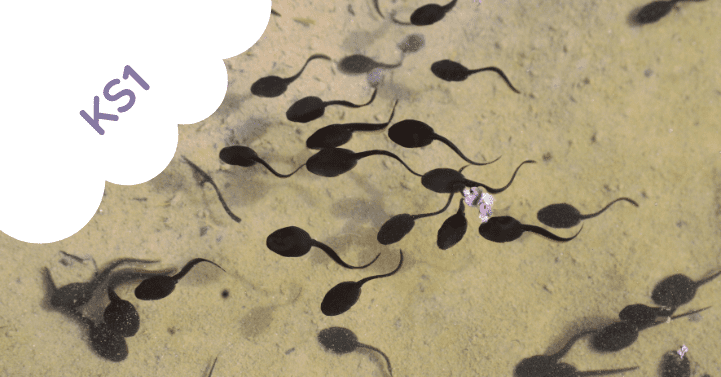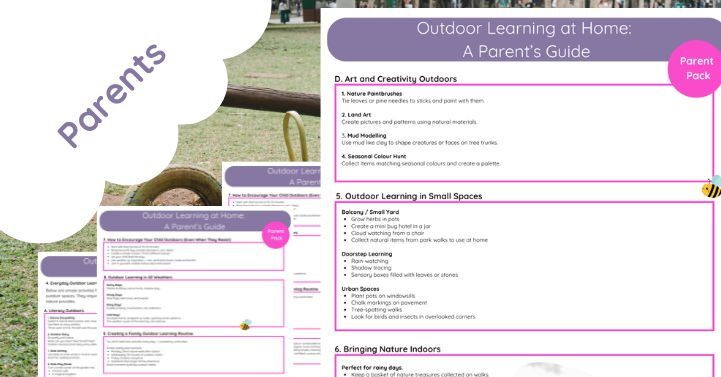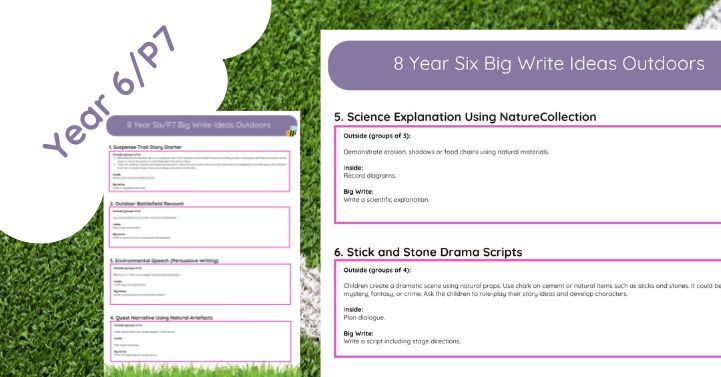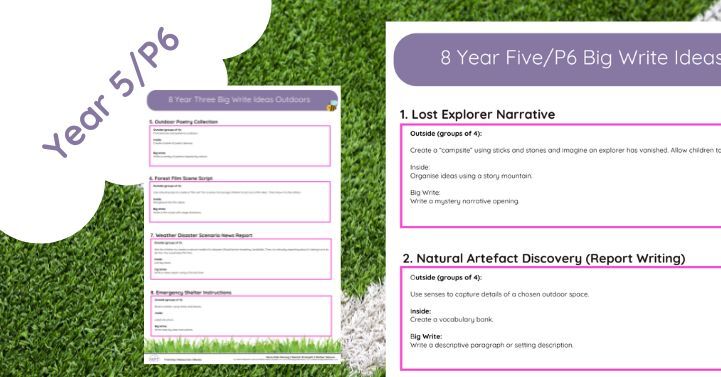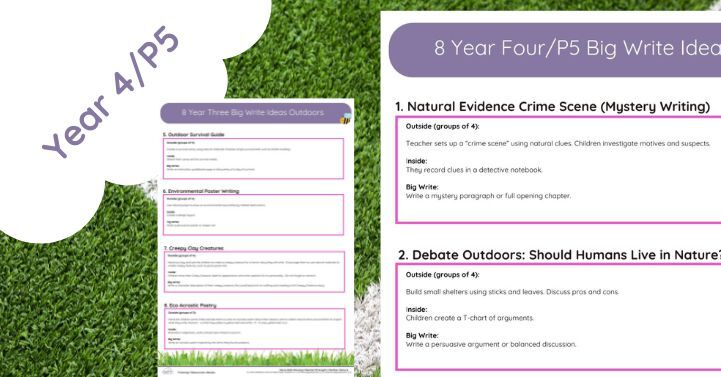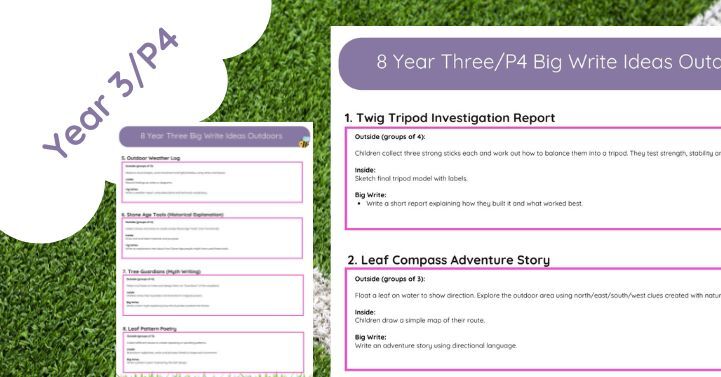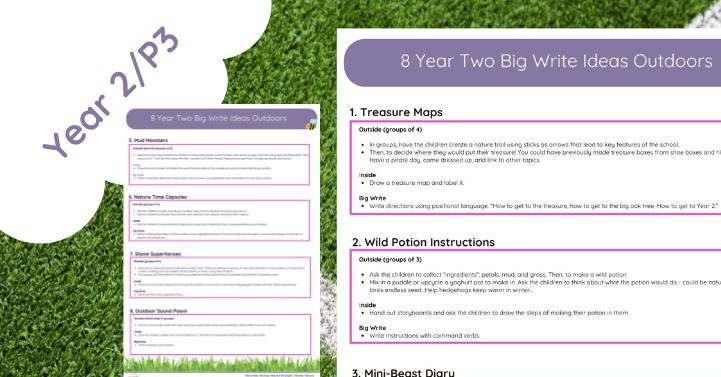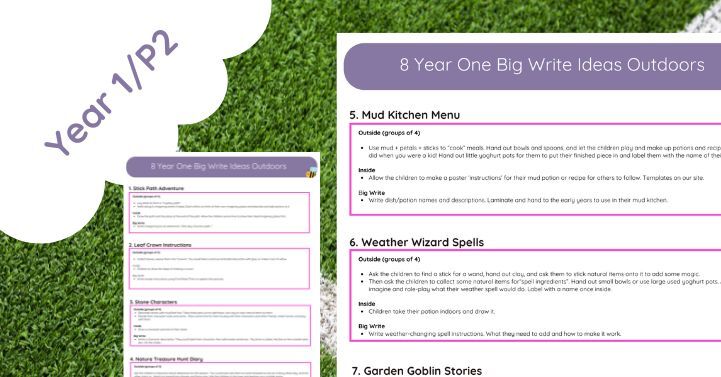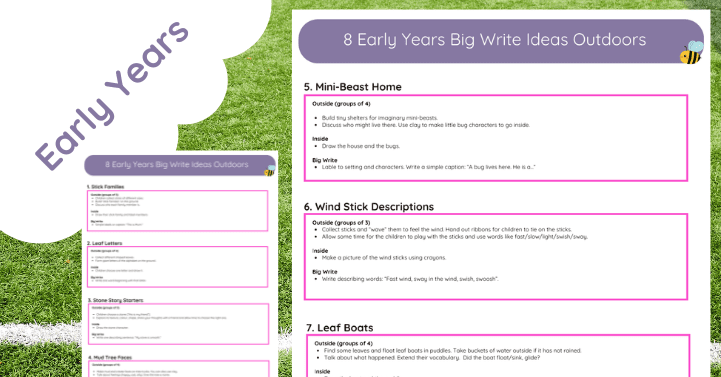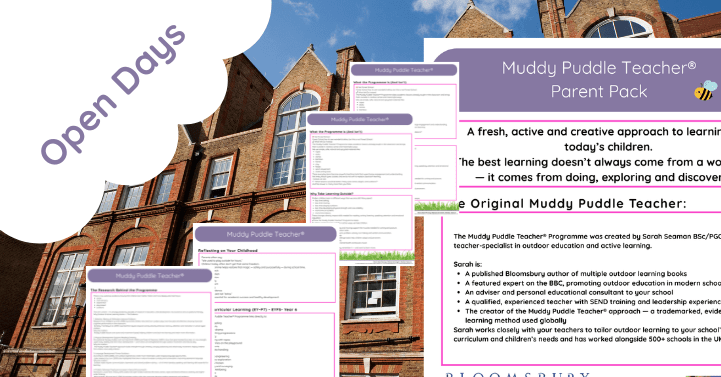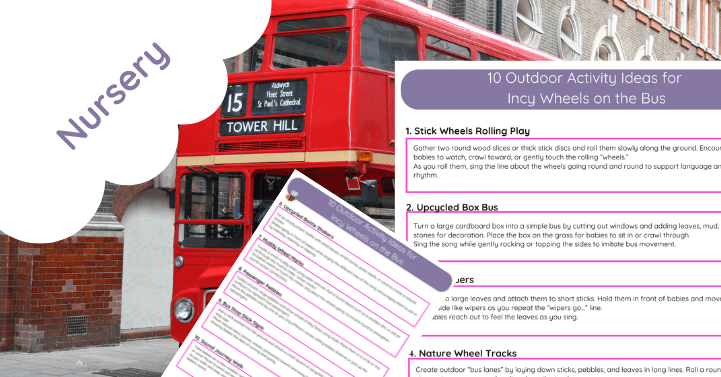Outdoor Ideas for Food Chains – A Hands-On Approach to Learning Science
Teaching food chains is a vital part of the KS1 science curriculum, and now you can bring this topic to life through the power of outdoor learning. Our Outdoor Ideas for Food Chains resource is packed with creative, curriculum-linked activities that help children explore the world of producers, consumers, and predators using natural materials, active learning, and The Muddy Puddle Teacher approach.
In this blog, we’ll show you why outdoor food chain lessons work—and how our new downloadable pack will transform your science sessions.
🧠 Why Teach Food Chains Outdoors?
Learning about food chains shouldn’t be limited to whiteboards and textbooks. Nature is the perfect classroom for this topic, and taking learning outside supports:
-
🌿 Real-life context – See actual plants and animals in their habitats
-
🎯 Deeper understanding – Visualise how energy flows through an ecosystem
-
💪 Active learning – Run, build, model, and act out food chains
-
💛 Inclusive teaching – Appeals to all learning styles and needs
By using materials like clay, colourful ropes, and bamboo canes, children can physically construct food chains and interact with the natural world, making learning both memorable and meaningful.
🐾 What’s Inside Our Outdoor Food Chains Lesson Ideas (PDF)
This ready-to-use digital pack includes 5 outdoor lesson plans specifically designed for KS1 learners, with clear links to the science curriculum.
✅ You’ll Get:
-
5 engaging lesson plans using clay, ropes, and bamboo
-
Easy setup instructions and extension ideas
-
Curriculum links to KS1 science and cross-curricular areas
-
Natural learning prompts that encourage exploration and discovery
Everything has been designed with busy teachers and outdoor educators in mind—no prep needed, and totally adaptable for different group sizes and settings.
🌿 What Makes This Pack Different?
At The Muddy Puddle Teacher, we believe in education through experience. That’s why this resource encourages children to:
-
Build food chains with clay
-
Act out predator-prey relationships
-
Use ropes to sequence and connect species
-
Construct 3D food chains using bamboo canes
-
Hunt for signs of producers and consumers in their own environment
Each activity is hands-on, practical, and rooted in the natural world—not just a worksheet with pictures.
📚 Curriculum Links (KS1 Science)
Our resource supports national science objectives including:
-
Identifying and naming plants and animals in their habitats
-
Describing how animals obtain their food from plants and other animals
-
Constructing simple food chains
-
Using scientific vocabulary: producer, consumer, prey, predator
It also touches on cross-curricular themes like teamwork, communication, and environmental awareness.
👩🏫 Who Is This For?
-
Year 2 teachers looking to bring science to life
-
Forest school leaders and outdoor educators
-
Homeschooling families wanting a creative approach
-
EYFS settings introducing early food chain concepts through play
No specialist science equipment needed—just clay, ropes, bamboo, and a little bit of outdoor space.
🛒 How to Use the Resource
Once downloaded, you can use the pack immediately:
-
Laminate it for forest school sessions
-
Print lesson cards for easy reference
-
Pick one activity a week as part of your science topic
-
Combine with nature walks or bug hunts for added context
🌦️ Perfect for all weather—just add waterproofs and wellies!
🐾 Food Chains in KS1: A Guide to Teaching the Basics of Nature’s Balance
Understanding food chains is a key part of the KS1 science curriculum, and it provides children with a valuable insight into how living things depend on one another for survival. From producers to predators, food chains introduce young learners to the flow of energy in nature—and open up exciting opportunities for hands-on, outdoor learning.
In this post, we’ll break down what food chains are, how they’re taught at Key Stage 1, and share fun, curriculum-linked activities to help your children get to grips with this fundamental science topic.
🌿 What Is a Food Chain?
A food chain is a simple way of showing how each living thing gets its food. It follows the path of energy as it flows from one organism to another.
In KS1, children learn that:
-
Plants (called producers) make their own food using sunlight.
-
Animals (called consumers) eat plants or other animals.
-
Some animals are prey, and others are predators.
-
A simple food chain might look like this:
Grass → Caterpillar → Bird → Fox
These ideas are introduced through practical activities, pictures, storytelling, and exploration of the natural world.
📘 KS1 Science Curriculum: Food Chains
The UK National Curriculum for Science at Key Stage 1 includes the following objectives relevant to food chains:
-
Identify and name a variety of plants and animals in their habitats
-
Describe how animals obtain their food from plants and other animals
-
Understand the concept of a simple food chain, identifying producers and consumers
This content often links with learning about habitats, living things, and life processes.
🎯 Why Teach Food Chains Early?
Teaching food chains at an early age helps children:
-
Understand how nature is connected
-
Begin to use scientific vocabulary
-
Develop observation and reasoning skills
-
Build curiosity about the environment and ecosystems
-
Understand cause and effect in nature (e.g. what happens if one part of the chain is missing)
🧠 Top Tips for Teaching Food Chains in KS1
✅ Use Real-Life Examples
Link to local animals and plants your children are familiar with (e.g. worms, birds, grass, hedgehogs).
✅ Keep It Simple
Start with 3-part chains (e.g. leaf → caterpillar → bird) before introducing more complex relationships.
✅ Reinforce Vocabulary
Introduce and repeat key words: producer, consumer, predator, prey, herbivore, carnivore.
✅ Use Outdoor Learning
Take the topic outside to help children observe habitats and make real-life links. For example, spotting a spider catching a fly shows a real food chain in action!
🎨 5 Fun Activities for Teaching Food Chains in KS1
Here are some tried-and-tested activities to make food chains come alive:
1. Make a Food Chain Craft
Cut out animals and plants from magazines or print pictures. Children glue them in order on a strip, adding arrows to show the direction of energy flow.
2. Outdoor Food Chain Hunt
Go outside with a checklist of living things (grass, slug, blackbird, etc.) and ask children to build food chains using what they observe.
3. Role-Play a Food Chain
Give each child an animal/plant card. Use a ball of string to connect them as they pass energy from the sun to plants to herbivores and predators.
4. Food Chain Sorting Game
Give children a selection of images and ask them to group them into producers, herbivores, carnivores, or omnivores.
5. Build Food Chains with Natural Materials
Use clay, leaves, sticks and rope to build outdoor food chains on the ground. Let children explain each link to reinforce vocabulary.


